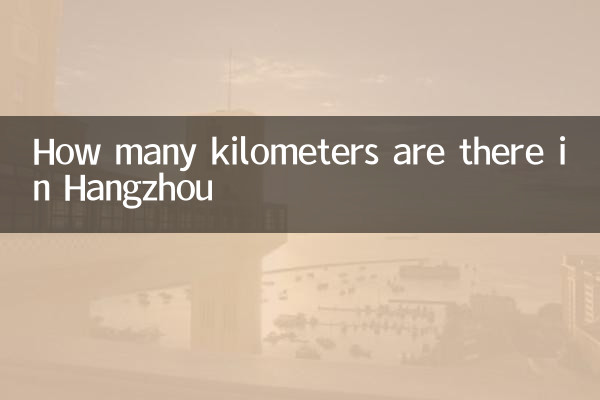How many kilometers is there in Hangzhou? Revealing the spatial scale and hot topics of this city
Hangzhou, a city that combines a thousand-year history and modern vitality, attracts global attention with its unique charm. Among the hot topics on the Internet recently, Hangzhou's urban planning, transportation network and cultural and tourism hotspots have frequently been on the list. This article will combine popular data in the past 10 days and analyze the secret of Hangzhou’s “kilometer” for you in a structured way.
1. A list of basic spatial data in Hangzhou

| Dimension | data | illustrate |
|---|---|---|
| East-West Span of the City | About 62 kilometers | From Lin'an to Qiantang New District |
| North-south span of the city | About 34 kilometers | From Yuhang to Xiaoshan |
| Perimeter of the ring highway | 123 km | One of the longest urban rings in the country |
| Subway operating mileage | 516 km | Latest data for 2023 (including under construction) |
2. Recent related data of Hangzhou hot topics
| Hot events | Related kilometers | Network popularity index |
|---|---|---|
| Asian Games Venue Utilization Survey | The average distance between venues is 8.7 km | 120 million |
| New regulations on traffic restrictions in West Lake Scenic Area | 7.8 km of Huanhu Road | 89 million |
| Qiantang Greenway Passage Project | 31 kilometers of waterfront greenway added | 65 million |
| Future Science and Technology City Expansion Plan | The radius of the core area is expanded to 5 kilometers | 53 million |
3. Hangzhou's special distance experience
1.Cultural axis distance: From the ruins of Liangzhu Ancient City to the CBD of Qianjiang New City, this historical axis that runs through 5,000 years of civilization is about 25 kilometers long, and has recently caused heated discussions due to the adjustment of cultural protection policies.
2.Food check-in radius: According to the latest data from Dianping, tourists walk an average of 9.3 kilometers a day to look for Hangzhou cuisine, and 72 time-honored brands gather within 3 kilometers of Hefang Street.
3.Digital Economic Belt Length: The planned length of the West City Science and Technology Innovation Corridor is about 33 kilometers. Recently, due to the expansion of Alibaba Cloud Valley, the number of readings on related topics has exceeded 80 million.
4. Comparison of key data of transportation network
| Transportation mode | Average daily operating mileage (10,000 kilometers) | Popular routes |
|---|---|---|
| subway | 18.6 | Line 1 (64.5 km) |
| Bus | 32.4 | Line B4 (28 km) |
| Shared bikes | 45.2 | West Lake Ring Road (7.5 km) |
| Water Bus | 1.8 | Canal Line (13.5 km) |
5. The "Hangzhou kilometers" in the future
1.Rail Transit 2025 Target: The total mileage will exceed 600 kilometers, achieving 800 meters of coverage of 80% of the central urban area's regional tracks.
2.Expressway network plan: In 2024, a "four vertical and five horizontal" expressway system with a total length of 464 kilometers has been completed, and the current completion rate has reached 87%.
3.Greenway system planning: By 2025, five main greenways including Qiandao Lake will be built, with a length of about 200 kilometers added.
From the stone road by the West Lake to the skyscraper group by the Qiantang River, Hangzhou uses different "kilometers" to measure the development trajectory. The spatial scale of this city is not only reflected in physical distance, but also engraved in every dimension of digital economy and humanistic care. The latest data shows that the average commuting distance of Hangzhou people is 9.8 kilometers, which is lower than that of Beijing, Shanghai, Guangzhou and Shenzhen, but it creates the same level of urban efficiency - this may be the most unique charm of "Hangzhou kilometers".

check the details

check the details